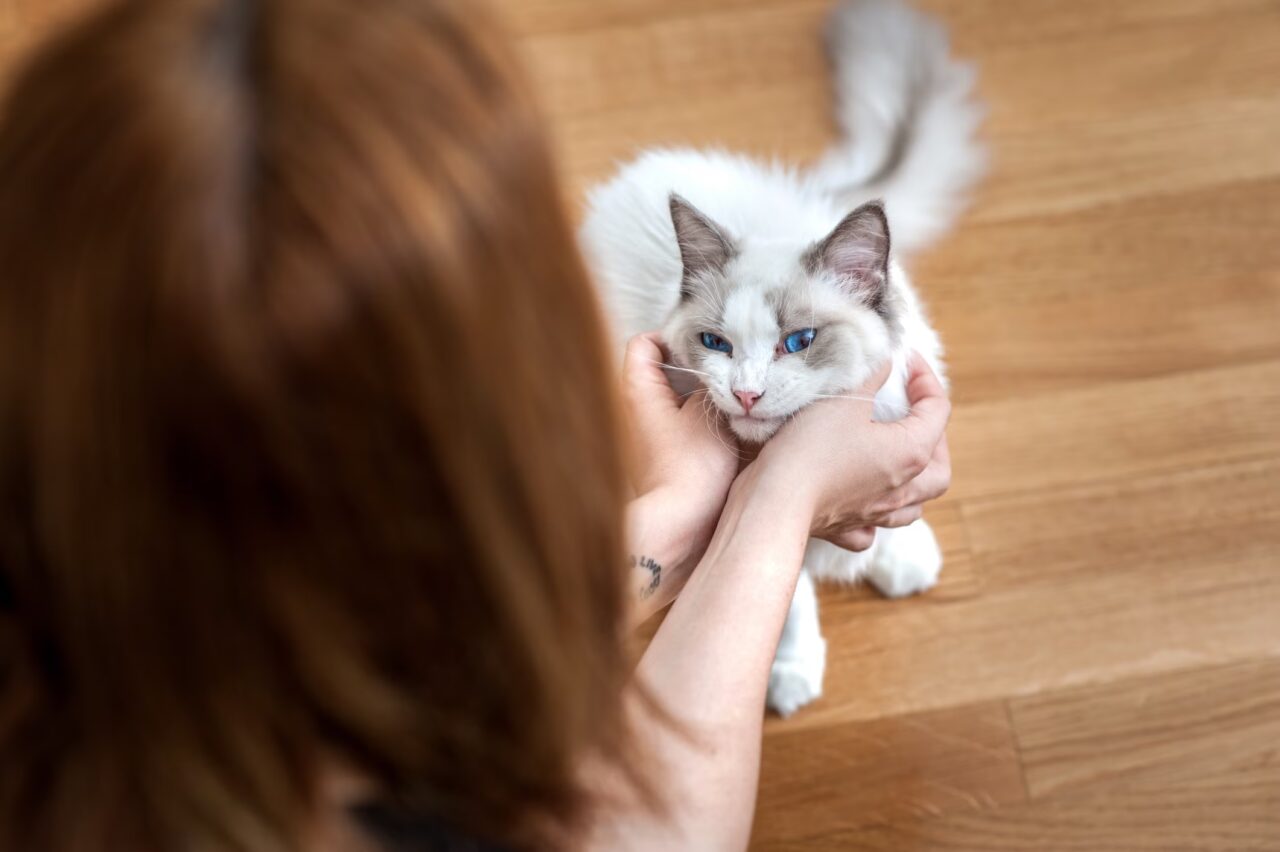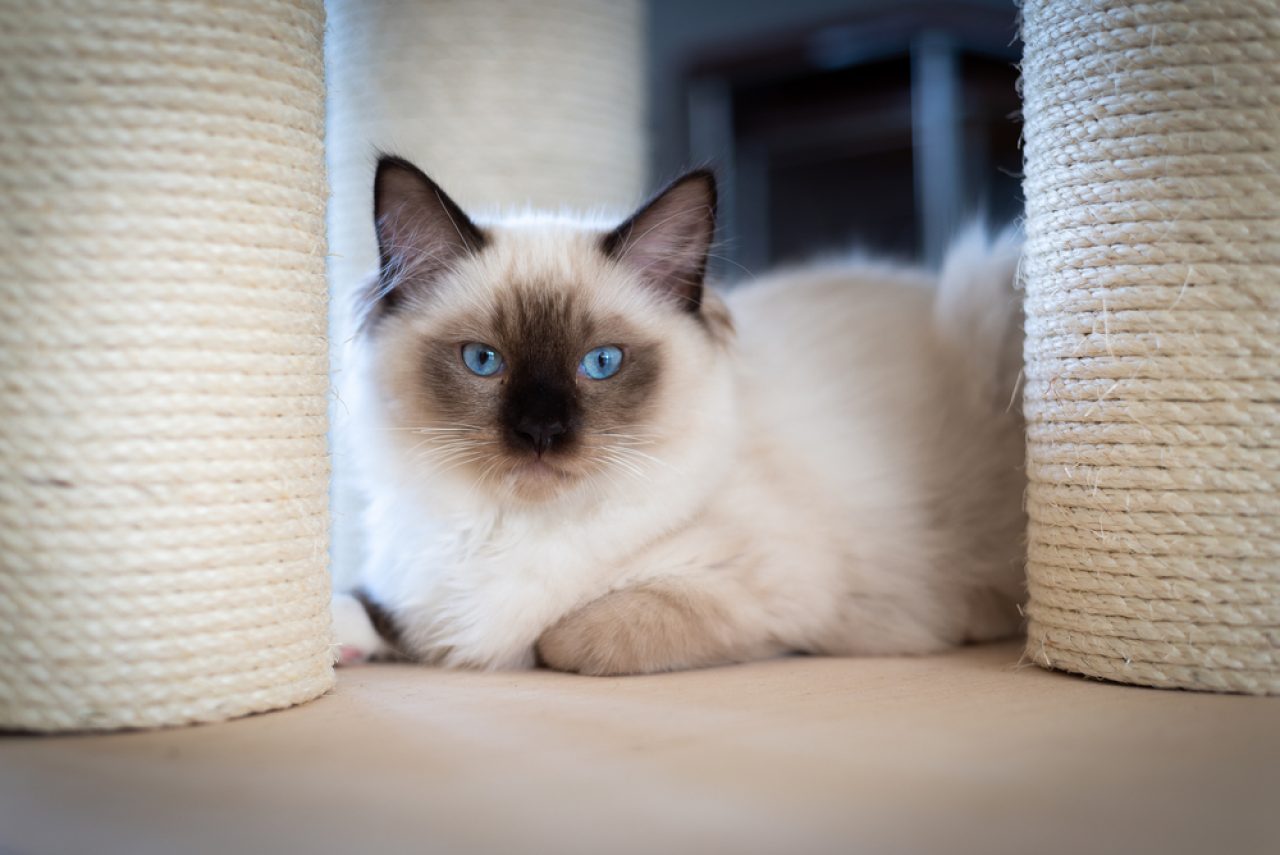Usually, cats shouldn’t be left home alone for more than 24 hours. This may not apply to every feline and is largely meant as a precaution to look out for wounds, spilled water, or other unforeseen occurrences.
Most cats will find ways to entertain themselves when their owners are gone but not Ragdolls. They might feel a bit too sad to engage in playtime all by themselves and won’t quite enjoy their toys the same way.
1. Refusing to eat

Ragdolls are usually picky eaters, so any unexpected change in their feeding habits warrants scrutiny. Trust me, you don’t want your already finicky cat’s behavior to become worse.
If your pet’s sad, she might refuse to eat altogether. For instance, you come home after working an eight-hour shift only to find your cat’s bowl untouched.
This is unusual for your gobbler because she loves food so much. Well, what cat doesn’t love food? This strange behavior makes you instantly think that there’s something wrong with your furry friend.
A Ragdoll might give up on her lunch today because she felt lonely. If this situation made you think about how long can Ragdoll cats be left alone, wait until you see some other signs of loneliness in these felines.
2. Avoiding contact

These cuddly creatures just love being showered with attention all the time. They live for climbing up and purring away in your lap forever.
Ever wondered why they were named Ragdolls? Well, you go to pick them up and they just flop down like a stuffed doll. So this goes to show you just how much they like being adored and cradled like a baby.
If your pet’s been acting weird lately, she might be experiencing some stress. Perhaps you came home from the store only to find your cat giving you “the look.”
“Where have you been? It’s been ages!” Usually, after she’s done scolding you, she runs straight into your arms and lets you kiss her. However, this time there’s something different.
She turned around and walked out of the room. You’re left baffled and you’re trying to comprehend what just happened. The truth is that your cat might be stressed.
Stress is probably to blame if your typically gregarious Ragdoll suddenly starts giving you the cold shoulder. You could also hear some wailing and screaming before they start ignoring you since Ragdolls often aren’t subtle in expressing their discontent.
If your cat, whose life depends on cuddles, doesn’t come to you for pets and kisses, then there’s probably something wrong with her. Could it be that you just left her home to grab a coffee? Sure.
3. Hiding away

Generally speaking, Ragdolls may be found anywhere. Also, you can find them getting stuck in places from time to time.
A Ragdoll hiding out in a dark place is a solid indicator that something’s wrong. Most likely, it’s a response to your extended absence.
When there’s something or someone close that worries your cat, they will hide. They could be apprehensive or afraid of something new, so they might wish to stay out of the way just in case.
On the other hand, if there’s something missing from her environment, such as yourself, she might act the same way. Felines are sensitive and every change in their surroundings might trigger their stress.
In most cases, if you let her calm down and come to you on her own, you’ll see that she will emerge from hiding once the threat has passed.
Perhaps she thought you were someone else or she just realized that she isn’t alone anymore. The longer your cat stays hidden, though, the more likely it is that she’s worried about something else in her house.
As I’ve said, they can really be sensitive, so anything can be the trigger for such behavior. Let your pet recollect her thoughts and approach you on her own terms.
4. Excessive grooming

The amount of fur that Ragdolls have is one feature that is quite evident. You want to curl up in this wonderful, cuddly-looking coat and snooze the rest of the day away.
You can’t help but notice how adorable she looks when she is peacefully asleep on the couch since she resembles a beautiful, fluffy cushion. But there is a cost associated with this beauty.
The Ragdoll cat requires routine combing and brushing to maintain her coat healthy and glossy all year long. Some people may find the lengthy coat to be a deal-breaker because not everyone is equipped to handle it.
The Ragdoll cat occasionally could have behavioral issues related to its hair. This suggests that your cat could overgroom herself. She could overdo the licking and biting of her fur.
What’s the issue, because cats are meant to wash? Yes, these careful animals work hard to keep themselves groomed and spotless all day. Since they appreciate every little thing, it ought to be commonplace, right?
It isn’t natural behavior for your pet to groom herself to the point that she may itch her skin or even pull off some of her furs. She might have an underlying disease or have just experienced stress.
This may be problematic in any case. Additionally, all of this licking and washing can cause her tummy to fill with hair. She will vomit hairballs or clumps of the coat because the fur can’t be digested.
As a result, be careful to give your pet frequent brushings and take good care of her coat. If you find this to be a difficult effort, I advise going to the groomer sometimes. This could reduce your pet’s overzealous grooming.
5. Aggressive behavior

Aggressive behavior isn’t something this breed is known after. But will that change if they spend some time on their own? Can Ragdoll cats be left alone without any consequences?
If you come home and notice some of the signs of fear and aggression in your feline, it might indicate that being by herself was stressful for her. You might be met with hissing sounds, flattened ears, and a raised tail.
It’s kind of similar to the behavior she exhibits while at the vet. But why is your cat expressing fear and aggression signals when she was only alone for a couple of hours?
Well, as I said, she may not be the biggest fan of solitude. Perhaps she just got startled when you came back home because she was on the edge the whole time.
We already established that Ragdoll cats don’t like when they’re companionless. So it’s possible you notice hostile behavior in your cat until she calms down and relaxes.
